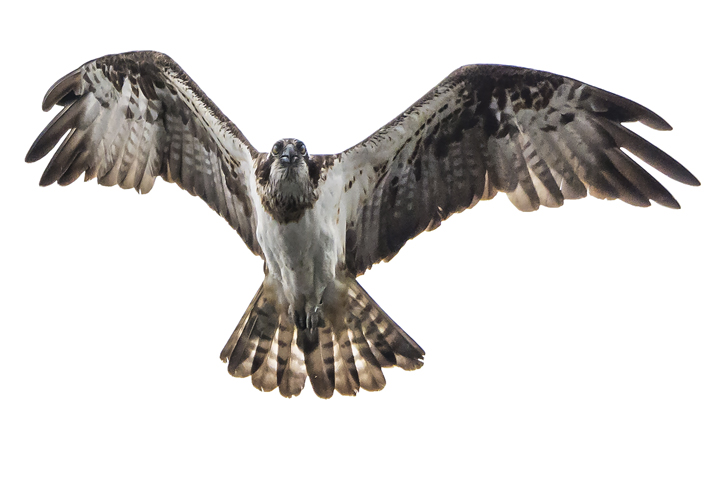The ELY Centres grant special permits when, for example, the case involves an infrastructure project of national significance. In recent years, special permits have been granted in conjunction with the construction or maintenance of a railway, metro station, lake water treatment plant and a transmission line.
During the past five years, Fingrid has received four special permits related to the protection regulations for flying squirrels and three special permits to remove an osprey nest from a transmission line tower.
“The number is quite low in relation to the length of our transmission lines, which is more than 14,600 kilometres. We’ve built about 800 km of new line during those five years. Not all special permits are related to new construction, because we come across flying squirrels when cutting down border zone trees and ospreys also nest in existing towers,” states Fingrid’s Expert Tiina Seppänen.
Fingrid has also applied for a multi-year permit covering the entire country related to removing the nests of several species, such as black woodpecker, osprey, raven and jackdaw, from transmission line structures. The grounds for the permit are the lack of any other satisfactory solution and, based on the Birds Directive, for reasons of ensuring public health and safety.
“Whenever an osprey nest is removed, we build an artificial nest in the immediate vicinity. The majority of osprey nests in Finland are artificial in any case, which means that the birds readily adopt them,” says Fingrid Specialist Maija Nurmi.
Many options before a special permits
When Fingrid builds something new, a nature study is completed in conjunction with the environmental study or environmental impact assessment. The ELY Centre reviews the plan. If it finds that implementation of the plan will cause environmental damage, alternative solutions to reduce the damage are discussed.
“If there are signs of threatened plant or animal species in the area, we may be able to change the planned route or tower locations. We might be able to shift it to the side or change the side it’s located on. We always have a compelling reason related to our statutory mission if we decide to apply for a special permit, but before taking that step we try to find other sustainable solutions for species protection,” says Seppänen.
Selective cutting is already used in the border zones of existing sites.
“The trees used by the flying squirrel can be saved in the border zone, for example, by cutting off the top of a tree that poses a threat to electricity transmission. We’ve tried safeguarding the flying squirrel travel routes by placing eight-metre tall launch trees in rights-of-way, mostly near towers because that’s where the conductors are highest. Protective trees are also saved. Sometimes, we leave narrower areas in the right-of-way,” continues Seppänen.
Collecting location information and work instructions
Protected species and habitats are taken into consideration throughout the life cycle of a transmission line.
“We save the information as environmental sites in the GIS system. This includes the work instructions that have to be taken into account at each site, for example, during construction or maintenance. The instructions can prohibit working at a certain time, such as when birds are nesting. For plants, we can prohibit the use of heavy equipment in a certain limited area. In ground water areas, we emphasise careful handling of chemicals, such as fuel,” states Nurmi.
Land owners have also been asked for information about possible threatened species. Even when Fingrid commissions a nature study, land owners possess valuable local knowledge.
“During the environmental study process for the Siikajoki–Raahe line, we sent out a letter asking land owners for observations about threatened species or other valuable local sites and landmarks. We especially want people to contact us when a project involves new construction. Our target is to discuss environmental issues openly with land owners, and we understand our responsibilities when operating on someone else’s land,” assures Nurmi.
All grid projects that are currently in progress and the environmental studies completed for them are available on the Fingrid website at Grid projects -> Projects.







